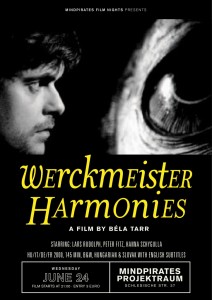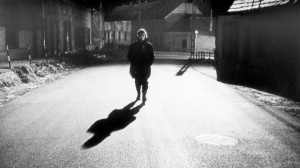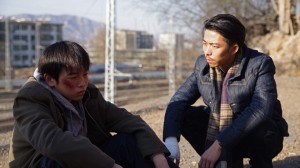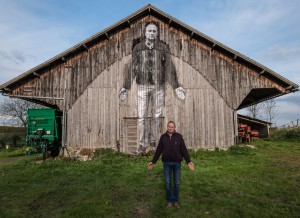My column for the abril 2018 issue of Caiman Cuadernos de Cine. — J.R.

“I personally can’t define the difference between a documentary and a narrative film,” Abbas Kiarostami once said to me, adding that he considered the difference between a good movie and a bad one more important. I would further note that films that blur distinctions between documentary and fiction, including Kiarostami’s, are sometimes better because they do so. This was recently brought home to me when I belatedly discovered that one of my favorite films of 2017, Heinz Emigholz’s Streetscapes [Dialogue], wasn’t a scripted restaging in Uruguay of the filmmaker’s psychoanalysis with its two original participants, as I had naïvely assumed, but a scripted restaging with an American actor and an Argentinian filmmaker — a discovery that made the film even more provocative and impressive.
When I start to reflect on the widely different ways in which documentaries and fictional narratives are shown and marketed, I begin to realize that obfuscating such issues are often marketing decisions, much as obfuscating distinctions between art and politics often turn out to be. As I suggested in my last column, while decrying the public indifference to Harvey Weinstein’s artistic crimes, this is business as usual in current transatlantic discourse — a recognition that Weinstein’s sexual crimes are “commercial” and his artistic crimes “non-commercial”. Read more
My contribution to MUBI Notebook’s Fantasy Double Features of 2019 (posted in late December). — J.R.

NEW: An Elephant Sitting Still (Hu Bo, China)

OLD: Werckmeister Harmonies (Béla Tarr, 2000)


Some of the differences between the late Hu Bo (1988-2017) and his mentor Béla Tarr may be just as important as their similarities. The latter made black comedies whereas An Elephant Sitting Still, Hu’s only feature, doesn’t find anything to laugh about. Even though the metaphysical and novelistic cast of both artists allows them to treat a group of lost individuals as a cosmos, with Tarr’s visible whale carcass in Werckmeister Harmonies apparently rhyming with Hu’s offscreen elephant, the compulsion of Tarr to follow his characters isn’t the same thing as Hu’s compulsion to embrace his own by moving ahead of them in the process of encircling them. Both ultimately offer blistering sociopolitical critiques of their respective societies in spite of their metaphysical trappings. The task of making blighted, hateful, and mean-tempered fools lovable is an essential part of both Satantango and Elephant, but what makes the latter fools slightly more redeemable is the degree to which they try to connect with one another, even if the results are futile. Read more
From the Chicago Reader (October 12, 2017). — J.R.
Faces Places

In this French road movie, whose original title juxtaposes faces with villages, 89-year-old filmmaker Agnès Varda follows 33-year-old photographer and installation muralist JR across the countryside as he and his team photograph working people, enlarge these shots into monumental black-and-white likenesses, and paste them onto the sides of the buildings where the subjects live and work. From the opening-credit animation onward, this delightful, digressive, breezy collaboration, staged to look more spontaneous than it possibly could be, celebrates and enhances both artists, repeatedly finding the extraordinary in the ordinary and growing more reflective and melancholy only in its Swiss epilogue. For Varda, this is a spinoff of sorts to The Gleaners and I (2000) and The Beaches of Agnès (2008); for me it’s a welcome introduction to the work of JR. —Jonathan Rosenbaum
 Read more
Read more







